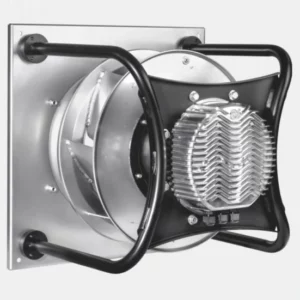Exploring the mechanics, uses, and benefits of axial flow fans, used for moving air efficiently in various settings.Axial flow fans operate on the principle of directing air along the axis of rotation, hence the name ‘axial flow’. At the heart of its operation lies the meticulously engineered blade design. Each blade profile is carefully crafted to create lift and drag forces that propel air smoothly without significant changes in direction. The pitch, shape, and number of blades directly influence the fan’s performance characteristics such as airflow rate, pressure generation, and power consumption. Furthermore, the housing and guide vanes often play key roles in enhancing overall efficiency by straightening and directing the airflow.
What Are the Basic of Axial Flow Fan Blade Design?

An axial flow fan, often called a propeller fan, is engineered to move air along its shaft’s axis. This key operation sets it apart from fans like centrifugals. Axial flow fan blade design of the axial fan blades is vital to its efficiency and application fit – the blades pull air in and expel it along the same path, using aerodynamics to maximize airflow and pressure.Axial flow fan manufacturers, among them renowned suppliers like Chinese Belmont, produce fans that propel air in a linear path, aligning airflow with the shaft.
How Critical Is The Design Of Axial Flow Fan Blades To Overall Performance?
Choosing an axial flow fan hinges on specs that match the intended use. Important details include airflow rate, pressure level, energy needs, noise output, and lifespan. A myriad of axial fan types exist, from compact home models to large industrial versions, and custom features like adjustable blades or efficiency-boosting backward curves accommodate diverse operating scenarios.
Axial flow fans offer a range of models to suit various needs, classified by mount type, drive method, and usage area. These fans differ in airflow rate, pressure, power use, noise, and size, vital for choosing the suitable fan for a project.The design of axial fan blades is key, enhancing airflow and cutting power use.
Axial Flow Exhaust Fans:
Axial flow exhaust fans are a common application of this technology, used in ventilation systems to remove stale or contaminated air from buildings, factories, and other confined spaces. Their ability to generate high volumes of airflow at relatively low pressures makes them ideal for large-scale ventilation and cooling purposes.Axial flow exhaust fans, a type of axial fan, are specifically designed to expel air efficiently from an area, such as in ventilation systems.
Specifications of Axial Fans:
China hosts a multitude of axial flow fan manufacturers, including esteemed brands like Belmont Fan. These companies specialize in designing and manufacturing axial flow fans according to international standards, offering a wide range of options from standard models to customized solutions. Chinese Belmont Fan suppliers, in particular, are well-known for their proficiency in EC (Electronically Commutated) fans and roof fans, which combine energy efficiency with advanced control features.Detailed axial flow fan specifications provide insight into their performance metrics such as size, capacity, and power requirements.
Types of Axial Flow Fans:
Among the portfolio of axial flow fans, EC (Energy Conversion) roof fans are emerging as a sustainable and intelligent choice. These fans employ brushless DC motors and integrated electronic controls, allowing for precise speed adjustment and substantial energy savings compared to traditional AC motors. EC roof fans, as provided by Chinese suppliers like Belmont Fan, are increasingly sought after for their eco-friendly credentials and potential to cut down on long-term operational costs.
Understanding the different axial flow fan types helps in selecting the right fan for a particular application based on its specific air movement needs.
Role of Chinese Belmont Fan Suppliers
Chinese Belmont fan suppliers are key players in offering diverse axial fans, including EC Roof Fans known for their energy efficiency.
In summary, axial flow fans embody a versatile class of ventilation devices that serve myriad purposes across multiple industries. From their intricate blade designs to the diversity of their types and specifications, these fans offer effective air circulation solutions. When sourced from trusted manufacturers and suppliers like those in China, axial flow fans, especially advanced models like EC roof fan, present a compelling blend of performance, efficiency, and sustainability.



